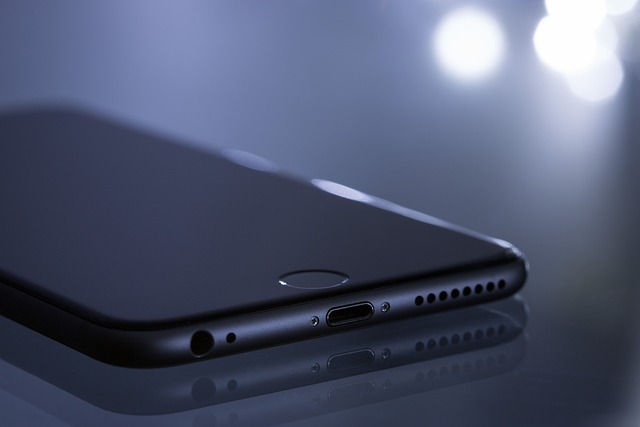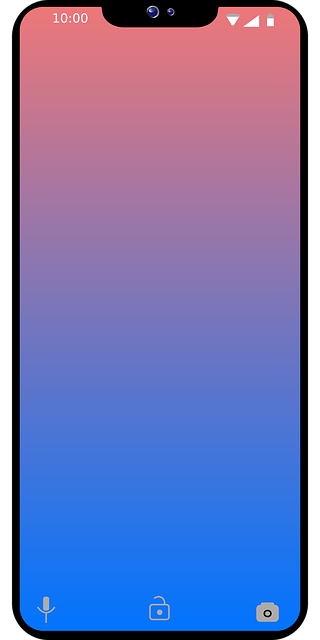To maintain an iPhone's optimal battery performance and longevity, it's crucial to regularly check the Battery Health feature in iOS settings. A significant drop in battery capacity of 20% or more, especially if it falls below 80%, typically warrants a battery replacement according to Apple's guidelines. Monitoring app usage and enabling Low Power Mode can help conserve energy, as can managing screen brightness, Wi-Fi, Bluetooth, and background app refreshes. Keeping the iOS up to date and disabling unnecessary motion effects under 'Accessibility' can also enhance battery life. If a notable reduction in battery endurance occurs, and these optimization techniques don't resolve the issue, consider replacing the iPhone battery as a cost-effective solution to prevent constant charging or carrying a power bank. Persistent battery problems may indicate degradation that necessitates professional battery replacement services, which can restore your iPhone's functionality without the need for a new phone.
extends the lifespan of your iPhone’s battery without resorting to a replacement? With smart usage habits and a few strategic adjustments, you can significantly enhance your device’s power endurance. This article guides you through assessing your iPhone’s battery health, understanding its consumption patterns, and implementing tips to optimize battery life. Learn how to effectively use Low Power Mode, manage high-usage applications, and recognize when it’s time to replace an iPhone battery. By following these top tips, you’ll be well on your way to prolonging your iPhone’s battery life and ensuring peak performance.
- Assessing Your iPhone's Battery Health: When to Replace an iPhone Battery
- Understanding Your iPhone's Power Consumption Patterns
- Tips for Optimizing Battery Life on Your iPhone Without Replacing the Battery
- Low Power Mode: How to Use It Effectively and Its Limitations
- App Management: Identifying and Controlling High-Usage Applications
- Making the Decision to Replace Your iPhone Battery: Signs You Shouldn't Ignore
Assessing Your iPhone's Battery Health: When to Replace an iPhone Battery

Regularly assessing your iPhone’s battery health is crucial for maintaining optimal performance and longevity of your device. To determine whether it’s time to replace an iPhone battery, you should pay attention to several key indicators. Firstly, look for significant changes in battery capacity or charging behavior. If your iPhone is struggling to last through a day on a single charge, when previously it could easily go two days, this might signal degradation. Additionally, frequent and unexplained shutdowns of your device while in use, especially under 20% battery, are another red flag. These issues often arise from a battery that has aged beyond its peak performance.
To perform a battery health check on an iPhone running iOS 11.1 or later, navigate to Settings, then to Battery, and select ‘Battery Health’. This feature provides a detailed report of your battery’s maximum capacity relative to its design capacity. A significant drop, typically by 20% or more, is a strong indication that it might be time to replace an iPhone battery. Apple’s official recommendation is to consider a replacement when the battery capacity falls below 80%. However, individual user experiences may vary, and personal tolerance for battery life can differ. If the convenience of having a reliable phone outweighs the cost or hassle of replacing the battery, it’s advisable to proceed with the replacement. This not only ensures a better user experience but also protects your iPhone from potentially harmful over-stressing due to an underperforming battery.
Understanding Your iPhone's Power Consumption Patterns

To effectively manage your iPhone’s battery life and potentially avoid the need to replace an aging battery, it’s crucial to understand how your device consumes power. iPhones are equipped with advanced batteries designed to provide long-lasting use, but over time, their performance can diminish. By monitoring your usage patterns, you can pinpoint which applications or functions are most energy-intensive. For instance, activities like continuous video streaming, playing graphics-heavy games, or using GPS for extended periods will naturally drain your battery faster. Keep an eye on the battery usage section in the Settings app to identify which apps are consuming the most power and consider adjusting their use or tweaking their settings. Regular updates to the iOS operating system can also impact battery performance; therefore, ensuring your phone is running the latest software can help optimize battery life. If you notice a consistent drop in battery longevity despite these considerations, it might be an indication that it’s time to replace your iPhone battery. Professional services or authorized Apple service providers can efficiently perform this replacement, restoring your device to its original battery life potential. Understanding your iPhone’s power consumption patterns is the first step towards maximizing your battery’s performance and ensuring your device stays operational throughout the day.
Tips for Optimizing Battery Life on Your iPhone Without Replacing the Battery

To extend your iPhone’s battery life effectively, it’s crucial to explore various optimization strategies that can help you make the most of each charge without resorting to a battery replacement. Firstly, assess which apps are draining your battery by navigating to ‘Battery’ in the Settings app and reviewing your usage patterns. Closing apps that consume significant power when not in use can lead to noticeable improvements. Additionally, enabling Low Power Mode automatically reduces battery consumption by dimming the screen, minimizing mail fetch, and scaling back visually intensive actions.
Furthermore, managing your device’s screen brightness is pivotal. Adjusting this setting manually or using an automatic schedule can prevent unnecessary strain on the battery. Similarly, optimizing Wi-Fi and Bluetooth settings so they activate only when needed, rather than remaining on in the background, can conserve energy. Background app refreshes are another feature that, when turned off, will significantly reduce power usage. Additionally, consider reducing motion effects by going to ‘Accessibility’ under ‘Settings’ and selecting ‘Reduce Motion’. This simple adjustment can lessen the workload on your iPhone’s processor, thereby extending its battery life. If a new battery seems imminent, remember that these steps can often postpone or even negate the need for such a replacement.
Low Power Mode: How to Use It Effectively and Its Limitations

To effectively manage your iPhone’s battery life and potentially avoid the need to replace an iPhone battery prematurely, utilizing Low Power Mode is a prudent strategy. This feature can be activated manually when you anticipate your device will not have access to a charger for an extended period, or it can be set to turn on automatically when your battery level falls below a certain percentage. Activating Low Power Mode reduces display brightness, optimizes background app refresh, pauses system updates, and limits features like Hey Siri and Mail fetch to help conserve energy. To enable this feature, navigate to Settings, then Battery, followed by Low Power Mode. Here, you can select to have it turn on automatically or choose to activate it manually via a control center shortcut for immediate battery savings.
Despite its effectiveness in extending battery longevity, Low Power Mode is not without limitations. It primarily affects background processes and visual display settings; it does not magically increase your battery capacity, which may eventually necessitate a replacement if your iPhone’s performance degrades over time. Additionally, some functions inherently consume more power, and while Low Power Mode manages these, it cannot entirely eliminate the need for a full charge in situations where you are heavily reliant on data or GPS for extended periods. Therefore, while Low Power Mode is an excellent tool for battery life management, it’s complemented by other practices such as reducing screen time, closing apps that drain power in the background, and ensuring regular maintenance updates are installed to improve system efficiency. These habits, paired with an understanding of your iPhone’s usage patterns, can further enhance your device’s battery performance and potentially delay the need for a battery replacement.
App Management: Identifying and Controlling High-Usage Applications

To maximize your iPhone’s battery life, it’s crucial to manage the applications that consume the most power. Your device’s operating system tracks which apps are using significant energy and provides a report in the Battery section of Settings. Regularly review this data to identify high-usage applications. Once you’ve pinpointed these power-hungry apps, consider whether their utility justifies their battery impact. If not, you might opt to replace them with more efficient alternatives or reduce their use.
For those apps that are essential but drain your battery, you can take steps to minimize their effect. Adjust their permissions so they don’t have access to background activities they don’t need. This can be done in the App Management settings by selecting ‘Background App Refresh.’ Additionally, force-quitting apps when you’re not using them—double-tapping the Home button and swiping up on each app—can also help conserve power. If your iPhone battery life remains a concern after these steps, it may be time to consider replacing the battery. This is particularly true if your device is older or has undergone multiple software updates, as battery performance can degrade over time. Replacing the battery with a new one from an authorized service provider or by following Apple’s guidelines for DIY replacements can bring back most of your iPhone’s original battery life.
Making the Decision to Replace Your iPhone Battery: Signs You Shouldn't Ignore

When your iPhone’s battery performance starts to wane, deciding whether to replace it can be a pivotal moment for any user. If you notice your device is no longer holding a charge as it once did, or if it’s losing power rapidly, these are clear signs that it might be time to consider a battery replacement. Persistent screen flickering or a swollen battery case, which can pose safety risks, are also indicators that professional intervention is necessary. Another critical sign is frequent random reboots; while occasional restarts can happen with any smartphone, if it’s happening regularly, the battery may have reached its limits.
Before opting for a full iPhone replacement, check the software updates your device is due for. Often, iOS updates can optimize battery performance and address issues that drain energy prematurely. However, if after updating your phone to the latest software, you continue to experience significant battery degradation, replacing the battery will likely be the most cost-effective solution. This move not only extends the life of your device but also ensures you have a reliable smartphone without the need for frequent charging or carrying around a power bank. Always consult with a professional or refer to Apple’s official guidelines for your specific model to make an informed decision about replacing your iPhone battery.
In conclusion, effectively managing your iPhone’s battery life can significantly extend its usage between charges. By regularly assessing your device’s battery health and understanding its power consumption patterns, you can make informed decisions about whether it’s time to replace an iPhone battery. Utilizing features like Low Power Mode and actively managing apps to curb their energy demands are practical steps to optimize your iPhone’s battery life without the need for immediate battery replacement. When considering a battery replacement, keep an eye on signs such as a diminished ability to hold a charge, swelling, or unusual shutdowns. With these top tips in hand, you can maintain a healthier battery and enhance your overall smartphone experience. Remember that while these strategies are effective, the need to replace an iPhone battery may arise with time due to natural wear and tear, so stay attuned to your device’s performance.
